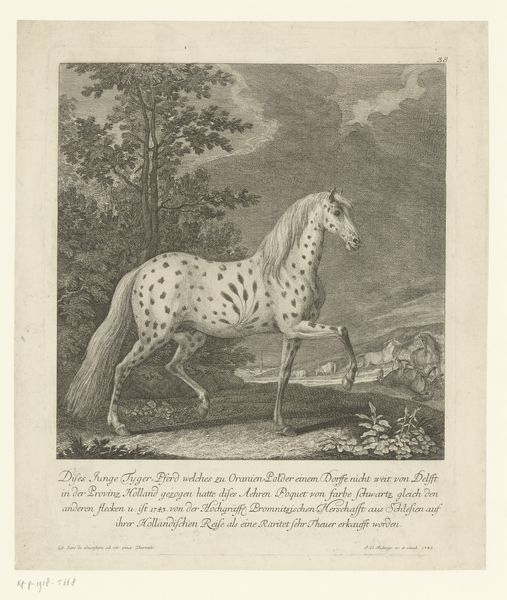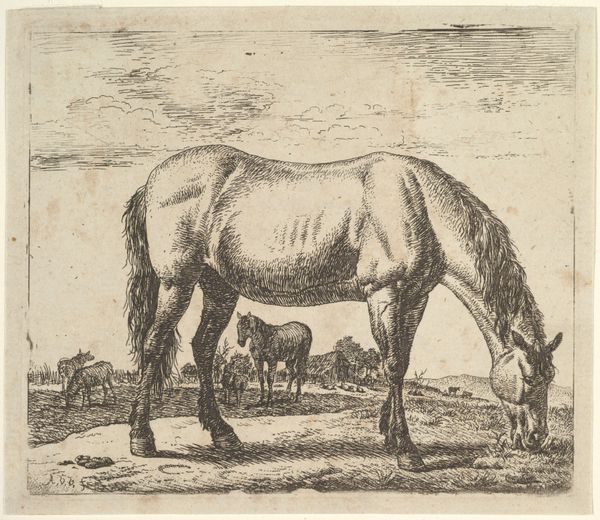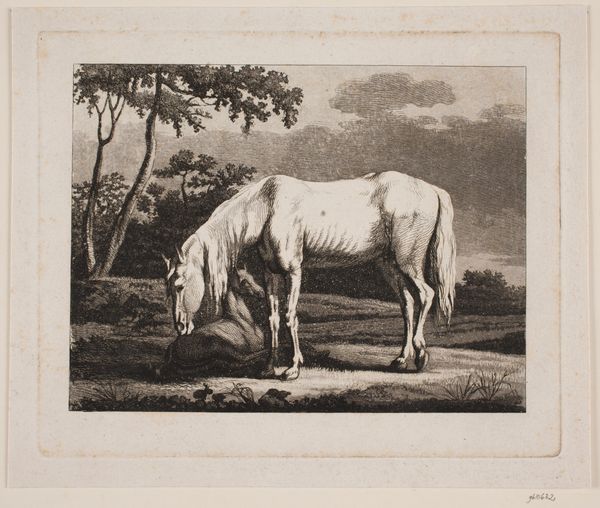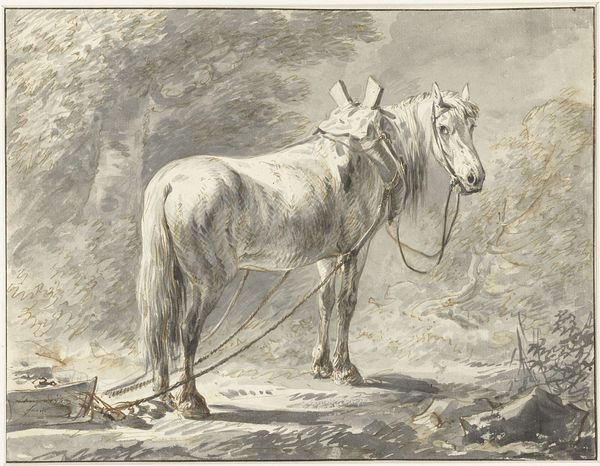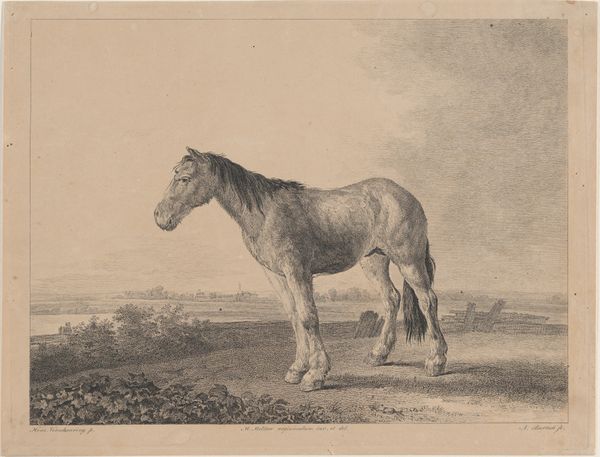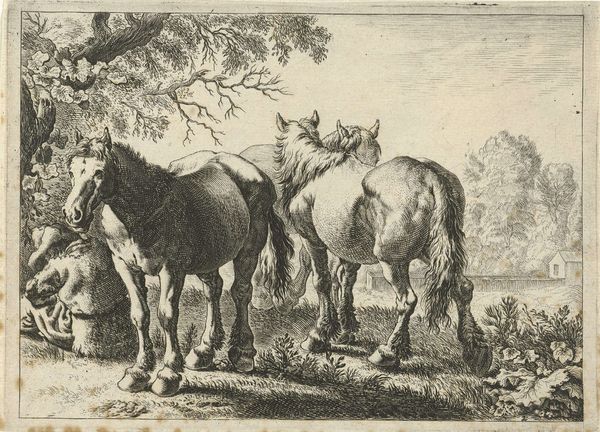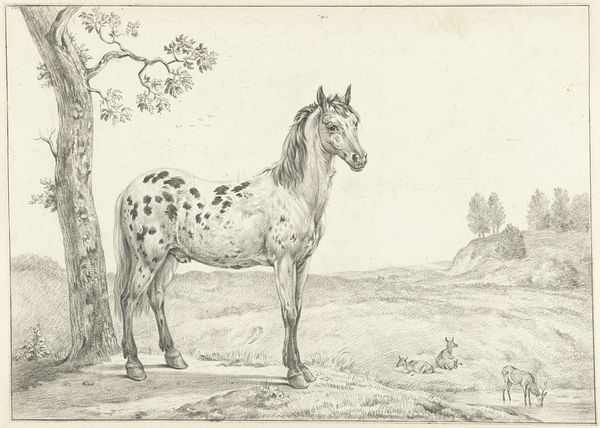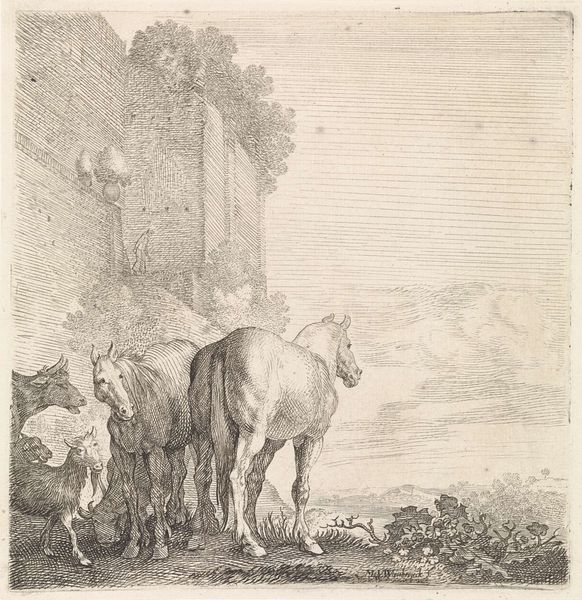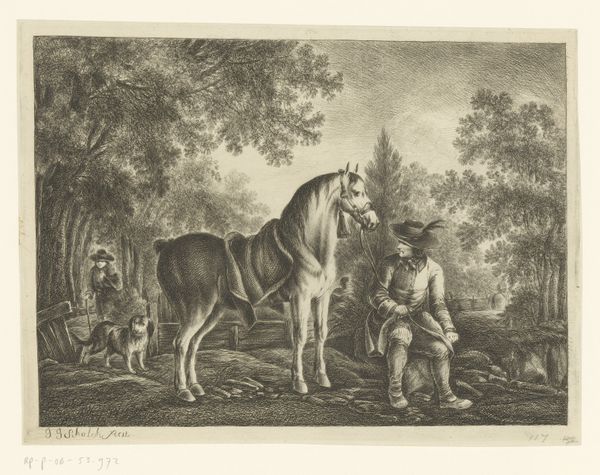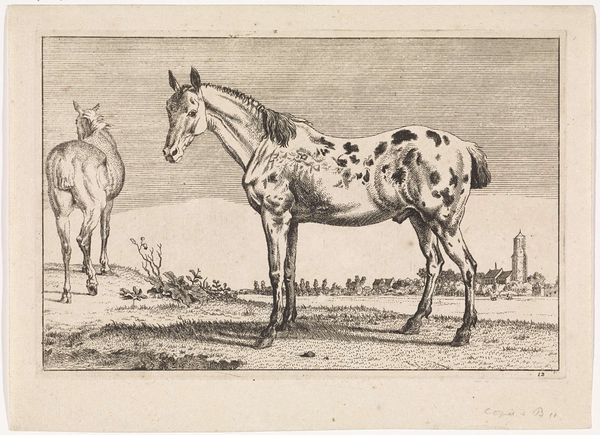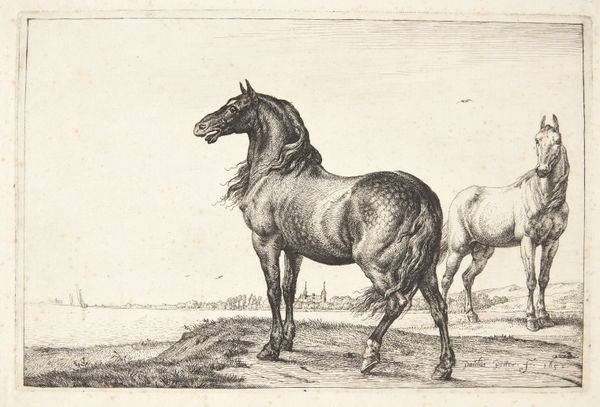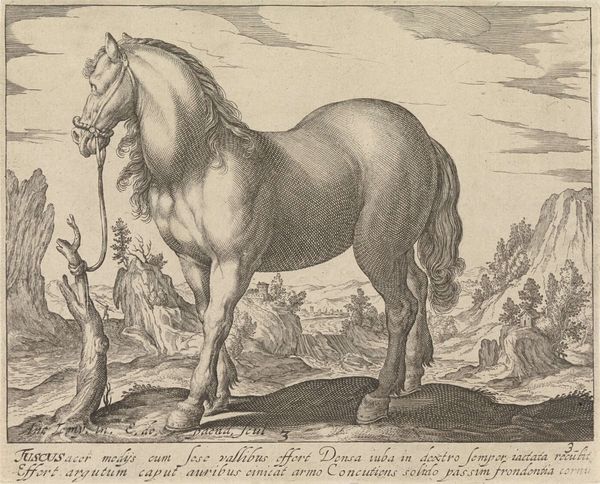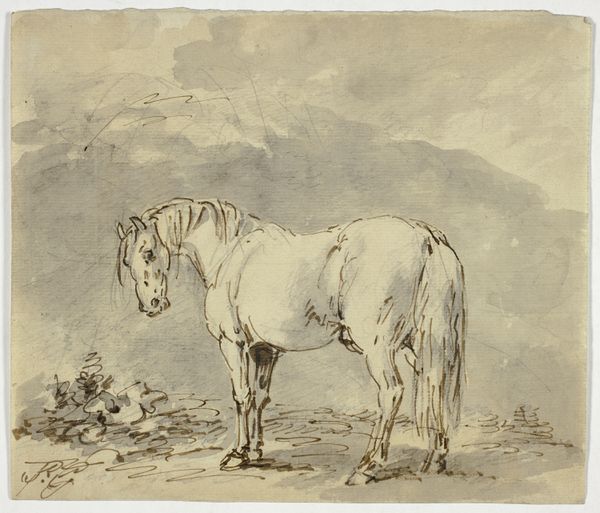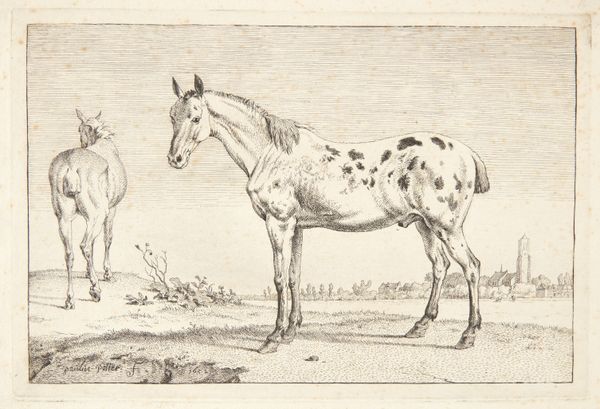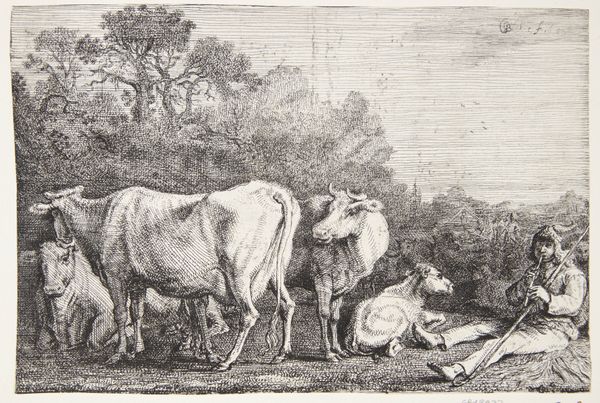
painting, oil-paint
#
dutch-golden-age
#
painting
#
oil-paint
#
landscape
#
figuration
#
oil painting
#
realism
Dimensions: 62 cm (height) x 54.5 cm (width) (Netto)
Editor: Here we have Nicolaes Berchem’s oil painting, "Two Horses in a Landscape," created sometime between 1635 and 1683. The dappled horse immediately captures your attention; it feels so intentionally posed against the more subdued landscape. What do you see in this piece, and how might its creation have been influenced by the art world? Curator: Well, it's a compelling window into the Dutch Golden Age. Paintings of animals, particularly horses, were increasingly popular. They weren't just about pastoral beauty. Consider who commissioned such works: often wealthy merchants or landowners wanting to showcase their affluence and status. This image of leisure ties directly to economic power and a sense of idealized country life. What do you think this image is selling? Editor: That makes perfect sense. The carefully positioned horse definitely suggests ownership and perhaps a desire for social elevation. It also connects to my observation that the composition seems so planned. Curator: Exactly. Berchem's strategic composition elevates the subject. While seemingly natural, there is intention behind everything: framing through the tree, the contrasting colours of the two animals. Given the increase in popularity of the Dutch Riding School in this period, do you see these artworks promoting ideals about animal breeding, wealth, or status? Editor: Definitely, that promotion feels inherent in the artistic choices now that I look at it from this socio-economic point of view. I never would have considered the economic underpinnings and their influence before. Thank you! Curator: Of course! Analyzing art with an awareness of historical context really enriches the experience. It reveals that even seemingly simple landscapes can communicate a great deal about power structures and social desires.
Comments
No comments
Be the first to comment and join the conversation on the ultimate creative platform.
